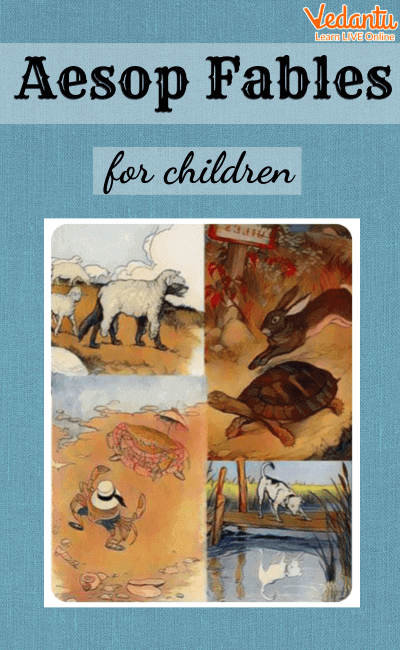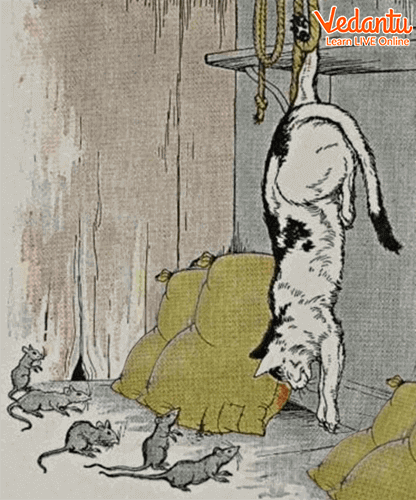Aesop Fables: The Cat and Rat Story in English

Aesop's Fables, popularly known as Aesopica, is a collection of lots of short stories with morals that were created by a writer named Aesop. Although all the stories belong to diverse origins, birthday stories associated with Aesop's name have descended to modern times through a number of sources and continue to be translated differently, verbally registered and in art as well as popular media.
Earlier the fables were used for social, political, and religious themes. They were mostly put for ethical guidance and from the Renaissance onwards they were particularly used for children's education. The reinforcement of the ethical dimensions in the adult world was done through depictions in sculpture painting and other illustrative means and they were also adapted in many songs and dramas. In addition to this, many interpretations worked and it changed the emphasis of the fables over time. Here is an interesting cat and rat story in English from Aesop’s fables. It narrates the story of a clever cat and a group of rats. Let’s read the fable to find out what happens!

Aesop’s Fables
About the Author
Aesop who is mostly credited for the number of fables now collectively known as Aesop's fables was a Greek storyteller and fabulist. Although his existence has not been clarified because his writings did not survive, a number of tales that were gathered across the centuries in many languages in the storytelling tradition were credited to him and continue till the day. Many of his tales are still associated with animal characters that have attributes of human traits, emotions, or intentions.
Many of the ancient sources that include Herodotus and Plutarch are the major witnesses of the scattered details of the writer's life. He was considered as a slave who by his cleverness acquired freedom and at last became an advisor to the kings and the City-States. The depiction of the writer has included many works of art in popular culture over the last 2500 years and numerous books, films, plays, and television programs have characterised his appearance.

Aesop, the writer
The Cat and the Rat Story
Once upon a time, there was a very clever cat that lived near a den where all the rats stayed. This cat was extremely watchful when it came to catching the rats. It was so watchful that whenever a rat showed its whiskers, the rat made sure to eat him alive.
Due to this, the rats were very scared of the cat. They eventually decided not to come out of their tiny little den. They used to feel that the cat was everywhere at once to hunt them down and eat them alive. But soon the clever cat realised that the rats were not coming out of their little den. The cat thought to herself that there was no point in waiting like this and that it had to deceive them. So the cat came up with a great plan.
The next morning, the cat climbed up the shelf and hung itself down dangling its head. It seemed that she was dead. Looking at her from far away, the rats decided to come out of the den and found out that the cat was dangling in an outrageous position. They thought it might be some kind of punishment that she had gone through. So they finally decided to check whether the cat was truly dead or not.
Few of them came out of their den and sniffed its head. But there was no movement of the cat. The cat just hung itself emotionless. The rats became very happy thinking that the cat was finally dead. They were about to start celebrating the evil cat’s death thinking that they won't be hunted anymore, singing and dancing out of joy. Finally, they thought that they were free to roam around anywhere without the fear of the cat.
And as soon as all the rats came out to celebrate their freedom, the cat untangled herself from the rope that had been holding its paws and pounced on them. The rats were stunned and before they could overcome the shock, the cat already preyed on three of them. The rats soon ran back to their home, sad and hopeless. The rats then became even more attentive. They hid in their den. But the cat was still hungry for the rats and decided to try them once again. Show the cat rolled up a heap of flour. Once the small dens were all covered with flour, the cat quietly sat inside the flour heaps and waited for the rats to come out.
Few of the rats were almost fooled again on seeing the heap of flour. But there was an old rat among the troop who was very clever and quickly came to know the trap was made by the cat. He wanted the young rats to be very careful now. He also said that the meal that was set out for all of them could be another trap by the cat. This had saved the young rats from an early death.

The cat hung itself from a rope
The Moral of the Cat and the Rat Story
The moral of the story that we learned from this beautiful fable is that the wise man always thinks before taking an action and is not fooled twice. Also, one should always listen to their elders as they hold much experience in life. Thus, by doing so, they can be saved from many difficulties and would become wiser day by day.


FAQs on Aesop Fables: The Cat and Rat Story in English
1. What were the rats fearful of?
The rats were fearful of the cat who used to eat them alive even if they showed their whiskers.
2. Who saved the young rats?
The young rats were saved by the old and wise rat who told them that the heap of flour was a trap set by the cat.




